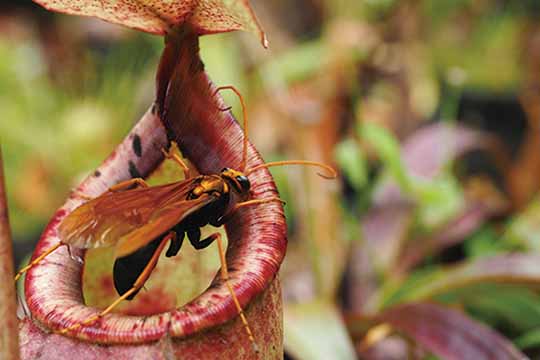
- Brian Foden
- 發布於 Jan.28,2022

從許多方面來看,豬籠草都是演化上的一個奇蹟 ── 它們是完美的陷阱
延伸閱讀 >> 會隱形的深海傘章魚:煎餅章魚 From Pixar to Reality: Looking at the Real Flapjack Octopus
閱讀測驗
A plant that eats spiders, insects such as ants, beetles, and butterflies, and even rats and small birds almost sounds like the plot from a weird science-fiction film. In fact, the movie The Little Shop of Horrors used the unusual idea of a man-eating plant named Audrey to delight audiences. Of course, humans do not actually need to worry about being devoured by plants outside the movies. However, meat-eating vegetation really does exist, particularly in tropical areas. Known by their scientific name Nepenthes or more informally as tropical pitcher plants, they are found in places from south China and Southeast Asia to Madagascar, India, and Australia.
In many ways, tropical pitcher plants are a marvel of evolution—the perfect trap. Typically, they are able to thrive in places where the habitat provides little nutrition, including sandy and volcanic regions. Tropical pitcher plants can survive in those areas because they get nourishment from their prey. Digestive glands allow the vegetation to feed on the nutrients supplied by insects and other small creatures that accidentally slip into the plant’s large “pitcher.” The prey may be attracted to the plant’s nectar, scent, or vivid color. The lip, which surrounds the mouth of the plant, is slippery, especially in wet weather, making it easy for creatures to fall into the cup. Once inside, the prey is surrounded by liquid, and it is extremely difficult for it to escape from the trap due to the nature of the watery substance and the waxy texture of the plant walls. All of this allows these unique plants to benefit from nutritious meals that other vegetation has no way of enjoying.
想看更多這類型文章嗎?現在就入會,每週一將收到免費的電子報喔!
入會及綁定LINE再享100元折價券 →




